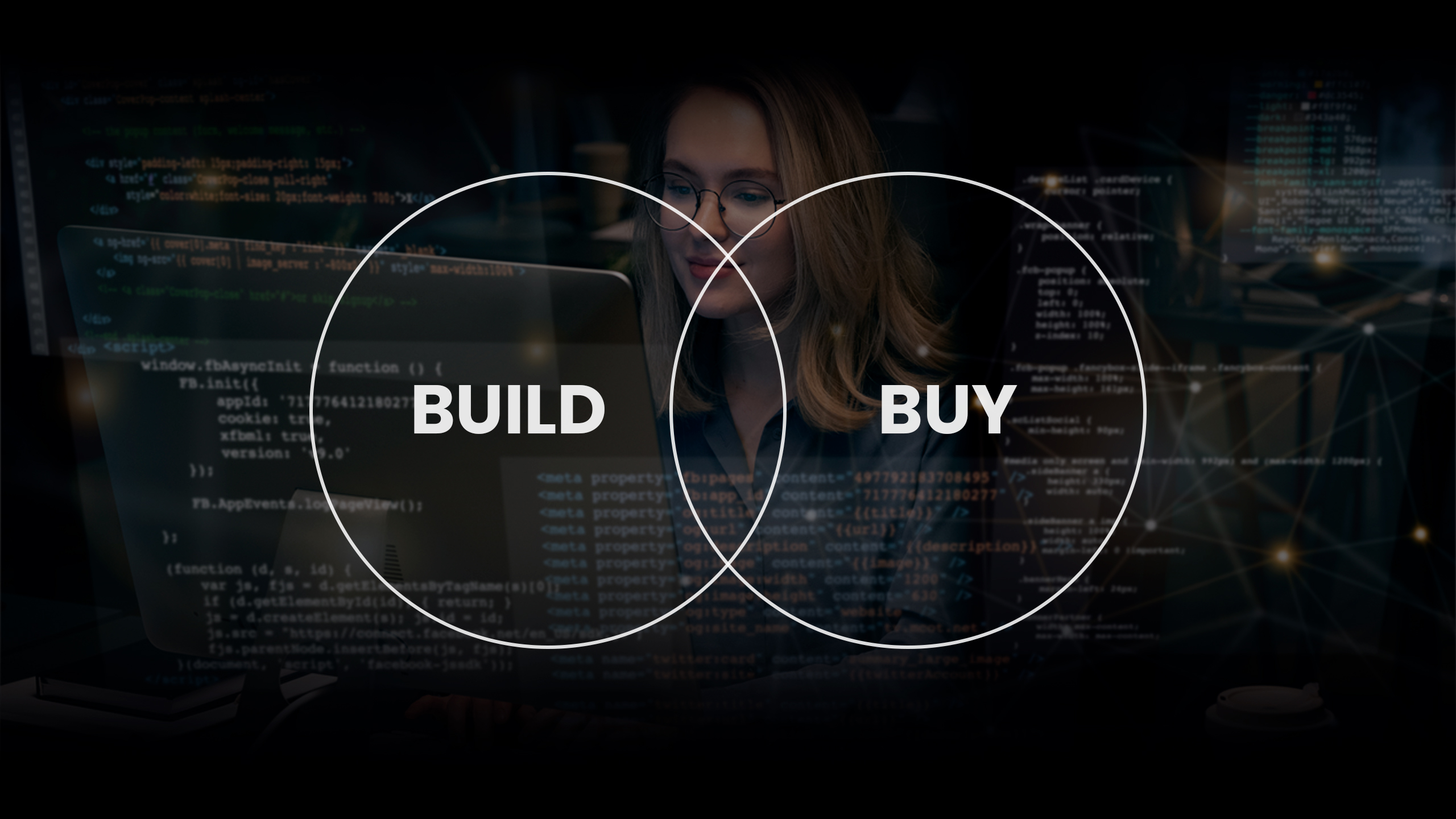Building Dreams or Buying Convenience
Archana Sali
February 12, 2024

Through our frequent engagements with CxOs, across various application software companies and technology infrastructure organizations, a recurring focal point of conversation revolves around the timeless Build vs. Buy situation.

Build Versus Buy
Building software involves creating a customized solution tailored to your requirements, offering flexibility for future adjustments. Traditionally, this required significant IT resources, but with low-code/no-code technology and improved vendor support, DIY solutions are more accessible.
On the other hand, purchasing software provides a ready-to-deploy solution designed by vendors to address specific needs. These solutions are user-friendly and require minimal coding post-purchase. However, point solutions, a common category, may not seamlessly integrate with existing IT frameworks, potentially lacking comprehensive functionality.
What to consider when deciding to buy a software?
When evaluating buying software, consider the following factors:
- How static or dynamic are your needs? Point solutions can address common generic business functions like CRM, but may not suit specialized internal processes that are unique to your organization.
- Will integration across systems be necessary? Adopting multiple disjoint software from different vendors can lead to data silos that inhibit cross-departmental collaboration. Comprehensive enterprise platforms are designed for seamless integration.
- To what extent does the software allow customization? As prefabricated solutions, off-the-shelf products have limited ability to modify and customize beyond basic configuration. Significant process changes may be difficult to implement in the future.

What to consider when deciding to build software?
When assessing building custom software, consider these aspects:
- What technical resources and skills do you have in-house? While programming expertise is handy, no-code platforms enable building solutions through visual actions and process knowledge without intensive coding.
- Are you willing to invest the initial time required for development? Creating customized systems is effort-intensive upfront, but provides long-term flexibility and benefits aligned closely with your evolving business needs.
- Can the solution readily adapt as your needs change? In-house systems allow shaping the software to fit your workflows and scale capabilities as requirements expand over time.
Are you still wondering how to determine whether to build or buy?
When deciding between software development and purchasing, it is important to tailor the choice to your organization’s distinct structure and needs. Evaluating the following key factors can guide your decision-making process:
Software Scope: Assess the number of stakeholders interacting with the software. Is it for internal use or does it involve external access and data sources? This evaluation should consider security and compliance implications.
Customization and Flexibility: For isolated issues, buying point solutions could be quick fixes. However, if you plan to integrate functions or foresee expansion, building custom software becomes viable. Finding a commercial solution with configurable options could also be ideal.
Cost: Your budget and resources are crucial. Compare costs between custom-built and commercial options, weigh the functionality.
Core Competency and Resources: Beyond cost, you must consider your organization’s skillset. Do you have the resources and expertise to build software, or should you leverage existing products to focus on our core business?
By thoughtfully evaluating these factors, you will make an informed decision aligned with your business objectives, ensuring the best fit for your unique needs.
But the question remains…
Now that you have learned about the benefits and drawbacks of both buying software and building custom solutions, and considered the relevant factors, the big question remains: What should you choose?